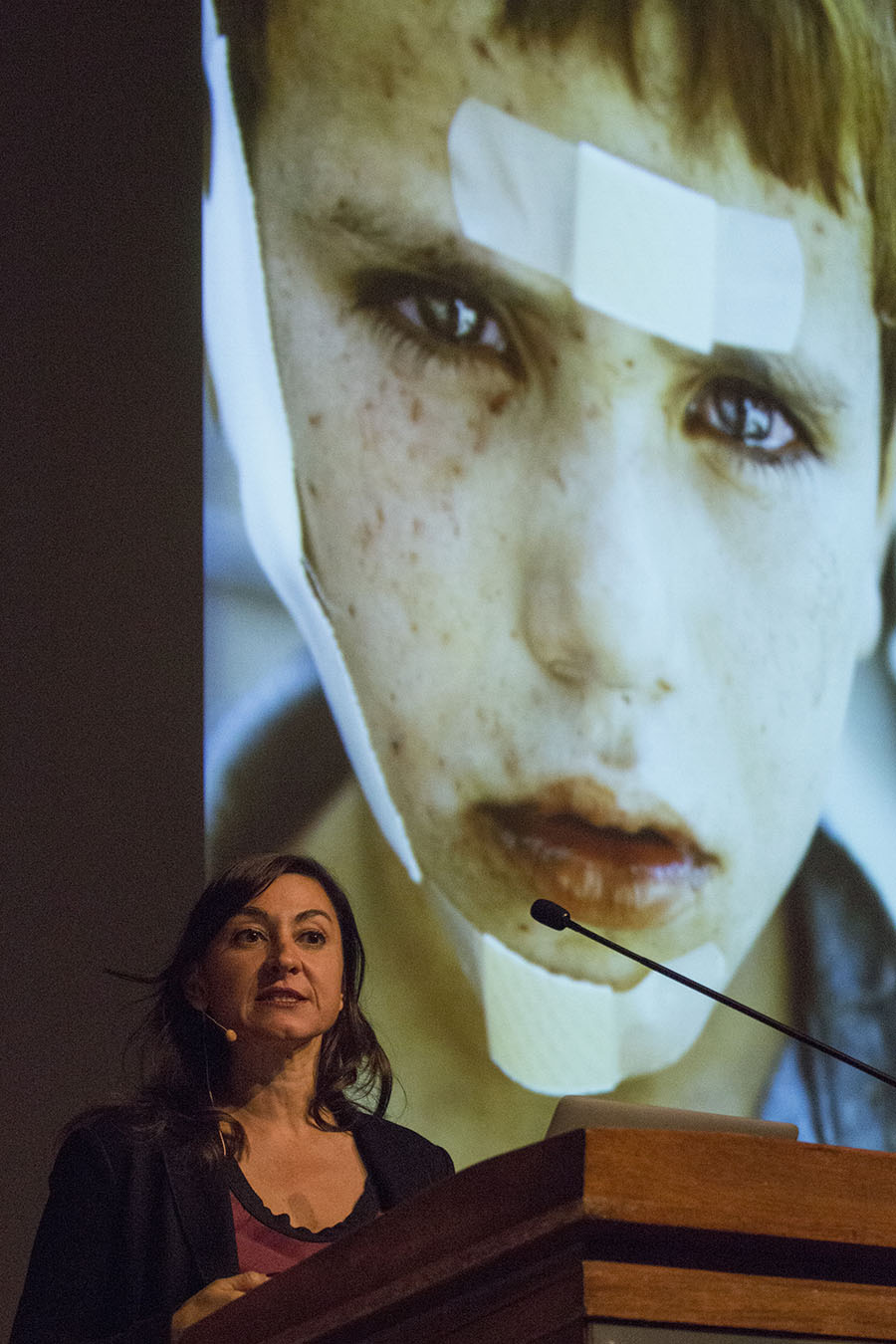By Amanda Wymore, senior in public relations
Lynsey Addario, American photojournalist and author of “It’s What I Do: A Photographer’s Life of Love and War,” [visited the Memorial Union Great Hall Oct. 12](http://www.news.iastate.edu/news/2017/09/27/lectures-addario) to share her experiences covering conflicts and humanitarian crises in Iraq, Darfur, South Sudan, Congo, Syria and Libya. Addario discussed her insights on the power and purpose of photojournalism and how visual communication can bring stories to life.
As a Greenlee student, I walked away with these four takeaways.

**On being informed rather than scared**
When beginning an assignment, every journalist should know what story they want to tell. Addario’s work has focused primarily on war, sexual violence, genocide and maternal death. Sharing stories and photos about despairing situations can be difficult, but making eye-catching images – often during horrific situations – informs the public about important issues, Addario said.
“My goal is to get people to care and to not turn away from these problems,” Addario said.
Addario has also had to defend her work to editors who feared the public would be offended or disgusted by photos of the ill, wounded and dead. During the Iraq War, she had to find another media outlet willing to publish images of wounded American soldiers en route to Germany after the editors of the publication that sent her to cover the story decided they ulimately couldn’t publish the photos.
**On covering every side of the story**
Photos can capture the most uplifting or the most disheartening conditions. In either situation, Addario believes it’s important to cover as many sides of the story as possible to share the most honest and accurate information.
“Don’t let your coverage seem superficial,” Addario said. “Make connections with your subject and even others relevant to your piece. Dive deep to find the answers you are looking for.”
Addario put this into practice when covering the Syrian refugee crisis for Time magazine’s [“Finding Home” series](http://time.com/finding-home-stories/). For an entire year, she followed three Syrian refugees who gave birth to babies on the road as they awaited asylum and raised their children in uncertainty.
**On being transparent and earning trust**
Telling a story comes with obstacles: resources may not be willing to share the full story, you may lack access to key locations or someone may not trust your credibility. Addario has faced times where she wasn’t getting the information she was looking for.
“These are intimate times in people’s lives,” Addario said. “If they won’t open up to you, try opening up to them. The more I opened up, the more they did the same in return.”
Being genuine and honest in your intentions was something Addario stressed often. Explaining your purpose for covering a story proves to be a winning strategy in most cases.
**On shedding a light on truth**
They say a picture is worth a thousand words. Photos of a woman moments before she died in childbirth or of a soldier wounded in battle may inform the public, but these images also help them understand the magnitude and humanity of a situation.
“There is no denying a photograph, this is proof,” Addario said.
Oftentimes it means putting oneself in danger — for example, waiting until the last possible moment before a city falls so as not to miss a thing.
“Journalists are greedy and stay until the last minute to get the most out of the situation,” Addario said. “[In some situations] we were called spies, but we just want the information needed to tell the truth.”
*Addario’s public lecture was cosponsored by College of Agriculture and Life Sciences, Global Resource Systems Program, Greenlee School of Journalism and Communication, International Student Council, International Studies Program, University Library, World Affairs and Committee on Lectures (funded by Student Government).*
